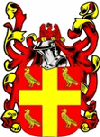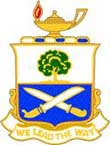rtrapasso
Posts: 22653
Joined: 9/3/2002
Status: offline

|
EDIT: Arrgh - again too slow...
Year 1212:
German princes elect a 17-year-old grandson of the late Friedrich I Barbarossa to succeed Otto IV, whom they deposed late last year (see 1210). Otto returns from Italy in March and makes some headway against his enemies, but his wife dies in August, and his hold on the southern duchies is thus weakened. Young Friedrich (Frederick) arrives from Sicily in the fall, is welcomed in Swabia, and is crowned December 9 at Mainz (see 1213).
Venice conquers Crete (Candia).
The Battle of Las Navas de Tolosa (Al-Uqab) July 16 breaks the power of the Almohads on the Iberian Peninsula (see 1195). Castile's Alfonso VIII has obtained the proclamation of a crusade by Pope Innocent III and gained the support from some French bishops, his 70,000-man army contains contingents of French knights and Knight Templars as well as troops from Léon, Castile, Aragon, Navarre, and Portugal, it has set out June 21 from Toledo, and the Almohad caliph Muhammad an-Nasir has moved June 22 to Jaén with a view to cutting off the Christian advance at the plain of Las Navas de Tolosa. Alfonso's French allies return home after helping to take two Muslim fortresses, but he recruits new troops from Navarre, leads his forces into battle, and gains a great victory just south of the Sierra Moreno in Andalusia. Pedro II of Aragon distinguishes himself in the battle; An-Nasir takes flight, Alfonso goes on to take Baeza and Ubeda, and most of the Almohads will soon be driven out of the Peninsula.
The Cathar "heretics" gain support from Pedro II of Aragon, who has heretofore supported the Albigensian Crusade (see 1211). Now 38, his loyalty to the Church has been above question, his heroism against the Muslims has made him a legend in his own time, he has been steadfast in making annual payments to Rome, but he now demands that the crusade in Languedoc be suspended forthwith (see 1213).
A "Children's" Crusade sets out for the Holy Land under the leadership of a 10-year-old from Cologne named Nicholas and a French shepherd boy from Cloyes-sur-le-Loir, near Vendôme, known only as Stephen, who claims to have had a vision in which Jesus came to him as a pilgrim bearing a letter for the French king. Advancing through Europe during the summer with the avowed purpose of liberating the Holy Land from the Muslims by love rather than force, Stephen's crusade gathers hundreds of followers, most of them destitute people of various ages who are called pueri (children) with contempt. Carrying wooden crosses, they number an estimated 30,000 by the time they reach Marseilles. Slave dealers there kidnap the crusaders and sell them into Egypt and other North African markets. Young Nicholas's crusade attracts about 20,000 followers in the Rhineland, crosses the Alps into Italy, but breaks into groups, with some of them being dispersed among Lombard towns while others make their way to Genoa, where they are refused transport, and others to Rome, where Pope Innocent III releases them from their vows. Many who reach Italy are also sold into slavery.
The Order of the Poor Clares (Franciscan nuns) is founded by Italian nun Clara of Assisi, 18, with help from her sister and Friar Giovanni Francesco Bernardone, 31 (Francis of Assisi), whose convent they joined last year over the violent objection of their parents (see 1209).
Tofu (soybean curd) reaches Japan from China, where people have eaten it for more than 2,000 years (see 907) and becomes popular with Buddhists as a substitute for meat and dairy products. The Chinese in the Song (Sung) period have also developed soy sauce, which adds flavor to the rice, oil, salt, vinegar, and tea that are dietary staples of the poor.
|
 Printable Version
Printable Version





















 I want my merit back!!!
I want my merit back!!! 








 New Messages
New Messages No New Messages
No New Messages Hot Topic w/ New Messages
Hot Topic w/ New Messages Hot Topic w/o New Messages
Hot Topic w/o New Messages Locked w/ New Messages
Locked w/ New Messages Locked w/o New Messages
Locked w/o New Messages Post New Thread
Post New Thread